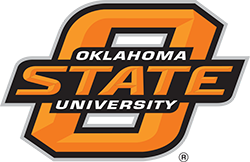OSU Says Arizona Groundskeepers at Fault for Slippery Super Bowl Field
News 6- Brittany Toolis - February 14, 2023 6:50 am

A controversial finish wasn’t the only trouble on the turf after Sunday night’s Super Bowl. The grass developed at Oklahoma State University turned out to be a big topic of discussion for, what some on the field said, was a subpar performance.
Minutes before kick off, OSU tweeted an ESPN article about their creation, Tahoma 31. It’s a breed of grass used on fairways and other stadiums; but based on the Twitter replies the turfgrass may have been a weak link.
The field for Super Bowl LVII took two years and $800,000 to make.
“Yes, brand new field that was just installed,” said the NFL‘s Senior Director of Events Planning, Eric Finkelstein.
The grass under the Chiefs and Eagles cleats was grown in Arizona but developed right here in an Oklahoma State University lab.
“It’s great for our variety, for Tahoma 31 to be recognized as a really resilient turfgrass,” the VP and Dean of OSU’s Agriculture program, Dr. Thomas Coon, said.
Tahoma 31 is a bermudagrass. It was developed, in part, from funds given by the US Golf Association, other NFL stadiums and Churchill Downs. The Eagles won the NFC East Championship on a variant at their home field.
“I don’t know if anybody can claim that they had plant material people were playing on and the performance of that,” the Associate VP of OSU’s Agriculture Research, Dr. Scott Senseman, said.
The grass is meant to be durable, engineered to stand up against Oklahoma’s climate. But that is not all the durability is good for.
“Especially for playing surfaces where very heavy men wearing cleats tear it up,” Dr. Coon said.
But during Sunday night’s game, players surfed on the turf.
“It’s been an issue since the pregame part. You see players having a hard time keeping their footing,” one FOX Sports commentator said.
Eagles players said in post-game interviews the field was one of the worst they’ve played on. One likened the field to playing in a waterpark. Punters slid into their kicks, and touchdowns came to a sliding stop, all on the grass meant to stand up to cleats and stop divots.
“We’ve already seen half a dozen Eagles change their cleats,” said the FOX Sports commentators.
OSU said in a statement the top layer of ryegrass was to blame for the slippage. The University also said even though the seeds were developed in Oklahoma, they were cultivated and grown in Arizona.
Below is the full statement:
“As a land-grant university, our mission is to advance science and extend knowledge. The bermudagrass variety Tahoma 31 took over a decade to develop before its release in 2017. This and other similar varieties are known for their exceptional winter hardiness, spring green-up, turf density, improved water use efficiency and traffic damage recovery.
While OSU scientists developed and patented Tahoma 31, they had no role in creating or preparing the field for Super Bowl LVII.
Tahoma 31 was used for the base layer, but the field also was seeded with a top layer of ryegrass, which has slick leaf surfaces when damp. That and other factors may have contributed to traction issues during play.
Notably, the Philadelphia Eagles played on Tahoma 31 at Lincoln Financial Field during the 2022 season, including the NFC Championship game two weeks ago. Tahoma 31 is widely used at high-profile sites across the country, including the Arkansas Razorbacks’ stadium, which was recognized as the 2022 College Football Field of the Year by the Sports Field Management Association.”



